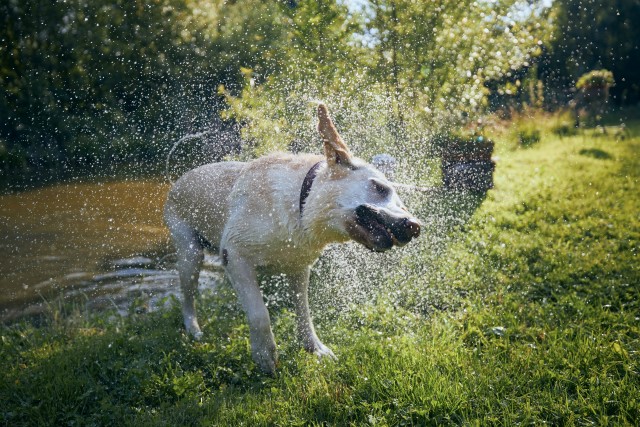Exercise for Pet Dogs
Exercise for Pet Dogs is a fundamental aspect of maintaining a healthy and happy lifestyle, not just for humans but for our furry companions as well. Pet dogs, irrespective of their breed, age, or size, need regular physical activity to stay fit, both mentally and physically. Exercise is the cornerstone of a dog’s overall well-being, affecting their physical health, behavior, and emotional stability. In this blog, we’ll delve deep into the significance of exercise for dogs, explore various ways to keep them active, and offer tips tailored to different breeds and life stages.
Why is Exercise Crucial for Dogs?
1. Physical Health Benefits
Just like humans, dogs benefit immensely from regular exercise. It helps:
- Maintain a Healthy Weight: Obesity is a common issue among pet dogs and can lead to serious health problems like diabetes, arthritis, and heart disease. Exercise, combined with a balanced diet, is key to weight management.
- Improve Joint Health: Regular movement keeps joints flexible and can reduce the risk of degenerative conditions like arthritis.
- Boost Cardiovascular Health: Activities like running and walking strengthen the heart and improve overall circulation.
- Enhance Digestive Health: Regular activity helps regulate bowel movements and prevents digestive issues like constipation.
2. Mental and Emotional Well-being
Exercise isn’t just about burning calories; it’s also vital for a dog’s mental health. It helps:
- Reduce Stress and Anxiety: Activities like walks, fetch, and swimming release endorphins, which promote a sense of well-being.
- Prevent Behavioral Issues: A bored or under-exercised dog is more likely to develop destructive behaviors, such as chewing furniture or excessive barking.
- Enhance Bonding: Engaging in activities with your dog strengthens the bond between pet and owner, fostering trust and companionship.
How Much Exercise Does Your Dog Need?
The amount of exercise a dog requires varies based on their breed, age, and overall health. Here’s a quick breakdown:
By Breed
- High-Energy Breeds: Breeds like Border Collies, Australian Shepherds, and Siberian Huskies are natural athletes and require 1-2 hours of vigorous exercise daily.
- Moderate-Energy Breeds: Dogs like Labrador Retrievers, Boxers, and Cocker Spaniels thrive on 45-90 minutes of moderate exercise each day.
- Low-Energy Breeds: Breeds such as Bulldogs, Shih Tzus, and Basset Hounds may be content with 30-60 minutes of light activity.
By Age
- Puppies: Puppies are energetic but have developing joints. Short bursts of play several times a day are ideal.
- Adult Dogs: Most adult dogs need consistent daily exercise tailored to their energy levels.
- Senior Dogs: Older dogs may require gentle activities like short walks to keep their joints mobile and prevent weight gain.
By Health Condition
Dogs with health issues, such as arthritis or heart problems, might need customized exercise routines. Always consult your veterinarian to develop a safe plan.
Types of Exercises for Dogs
The type of exercise you choose should align with your dog’s preferences and capabilities. Here are some popular activities:
1. Daily Walks
The classic and most accessible form of exercise, walks are a must for all dogs. Walking provides physical activity and mental stimulation as dogs explore their environment through sights, sounds, and smells.
2. Running
For high-energy breeds or active pet parents, running can be a fantastic way to burn off excess energy. Be sure to gradually build your dog’s endurance and avoid running during extreme weather conditions.
3. Fetch
Fetch is a versatile activity that can be played in a park, backyard, or even indoors. It’s a great way to engage a dog’s prey drive and improve their reflexes.
4. Swimming
Swimming is an excellent, low-impact exercise, particularly for dogs with joint problems. Many dogs, like Retrievers and Spaniels, naturally enjoy the water, but you can use floating toys to encourage hesitant swimmers.
5. Agility Training
Agility courses involve hurdles, tunnels, and weaving poles, making them perfect for mentally and physically stimulating high-energy breeds. You can set up a basic course at home or enroll your dog in a professional class.
6. Tug-of-War
This simple game is great for building your dog’s muscle strength and reinforcing bite control. Always use a sturdy toy and ensure the game remains friendly and controlled.
7. Interactive Toys
Puzzle feeders and treat-dispensing toys challenge your dog mentally while encouraging physical movement. These are ideal for rainy days when outdoor activities might not be feasible.
8. Social Play
Allowing your dog to interact and play with other dogs at a park or daycare can be a great form of exercise. Socialization also helps improve their behavior around other animals.
Tips for Safe and Effective Exercise
- Warm-Up and Cool-Down: Start and end with light activity to prevent muscle strain.
- Hydration is Key: Always provide fresh water before, during, and after exercise, especially in hot weather.
- Choose the Right Time: Avoid exercising your dog during peak heat hours. Early mornings or late evenings are ideal during the summer.
- Know Your Dog’s Limits: Watch for signs of exhaustion, such as heavy panting or reluctance to move, and stop immediately if they appear.
- Use Proper Gear: Invest in a comfortable harness, durable leash, and toys suited to your dog’s size and strength.
- Adapt to Weather Conditions: On hot days, limit intense activities and consider indoor exercises. In winter, use dog-friendly booties to protect their paws from ice and salt.
Special Considerations for Puppies and Senior Dogs
Puppies
Puppies are bundles of energy, but they are still growing, and excessive exercise can harm their developing joints. Limit activities to short, engaging sessions of play and avoid forcing them to run long distances.
Senior Dogs
Older dogs may have limited mobility and stamina. Focus on gentle activities like short walks, slow-paced fetch, or swimming to maintain their health without causing undue strain.

The Role of Mental Stimulation in Dog Exercise
Physical activity is only one part of the equation; mental stimulation is equally important. Engaging a dog’s mind through training, puzzle toys, and games like hide-and-seek can help prevent boredom and improve their cognitive skills. Incorporate activities that challenge your dog’s problem-solving abilities to provide a well-rounded routine.
Addressing Common Challenges
Busy Schedules
For pet parents with hectic lifestyles, incorporating exercise into your daily routine can be challenging. Here are some solutions:
- Hire a Dog Walker: Professionals can ensure your dog gets their daily exercise even when you’re busy.
- Use Dog Daycare Services: These facilities provide a safe environment for dogs to play and socialize.
- Combine Exercise with Errands: Take your dog along for errands that involve walking or outdoor stops.
Weather Constraints
Adverse weather can limit outdoor activities. Try indoor alternatives like:
- Fetch in a hallway or large room.
- Puzzle toys to keep them engaged.
- Treadmill training, if your dog is comfortable with it.
Monitoring Progress and Adjusting Routine
Please keep track of your dog’s activity levels, behavior, and weight to ensure their exercise routine is effective. If you notice signs of boredom or reduced enthusiasm, mix up their activities to keep things exciting. Always adjust the intensity and duration of exercises based on your dog’s health and energy levels.
Conclusion
Exercise is an indispensable part of your dog’s life, contributing to their physical health, mental well-being, and overall happiness. By understanding your dog’s unique needs and preferences, you can craft an exercise routine that keeps them healthy and fulfilled. Whether it’s a brisk walk, an exhilarating game of fetch, or a fun agility session, the key is consistency and adaptability.
Remember, a well-exercised dog is not only healthier but also happier and better behaved. So grab that leash, toss a ball, or plan a new adventure with your furry friend—because their well-being is worth every effort.

